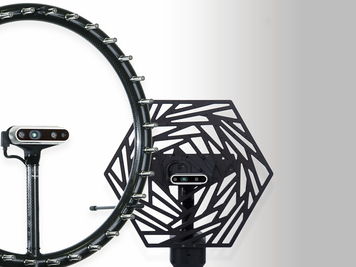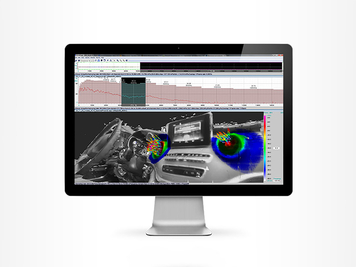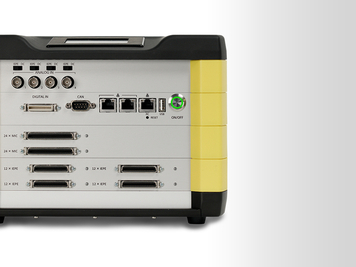With uncorrelated microphone noise, the corresponding covariance matrix \(\overline{WW^{\ast}}\) can be written as \(\overline{WW^{\ast}} = \sigma^2I\) with \(\sigma^2\) representing the noise variance and \( I \) the identity matrix. As with OBF, the eigendecomposition of \(C = V \Lambda V^{\ast}\) is conducted resulting in the diagonal matrix of the eigenvalues \(\Lambda = diag\{\lambda_1,\lambda_2,...,\lambda_M\}\) and the matrix \(V = [V_1,...,V_M]\) as well as its conjugate transpose \(V^{\ast}\) containing the eigenvectors. Instead of using the correct eigenvalues and eigenvectors to describe the signal space, MUSIC only uses the eigenvectors corresponding to the noise subspace. As mentioned before, the number \(N\) of all noise-corresponding eigenvalues must be estimated to determine this subspace. Hence, all other eigenvalues of \(C\) can be assigned to the incident signals. A separation of the eigendecomposition is possible now:
\(C = \underbrace{\sum_s V_s \Lambda_s V^{\ast}_s} + \underbrace{\sum_n V_n \Lambda_n V^{\ast}_n}\)
signal part noise part
The spatial spectrum and thus the result of the MUSIC algorithm can be defined with the \(N\) noise eigenvectors \(V_n\):
\(b(\vec{x}_t,\omega_k) = \frac{1}{\sum_n g^{\ast}(\vec{x}_t,\omega_k)V_n V^{\ast}_n g(\vec{x}_t,\omega_k)} \)
If a steering vector is steered towards a noise source, the function in the denominator reaches a local minimum due to the orthogonality. This results in a local maximum on the acoustic map.




